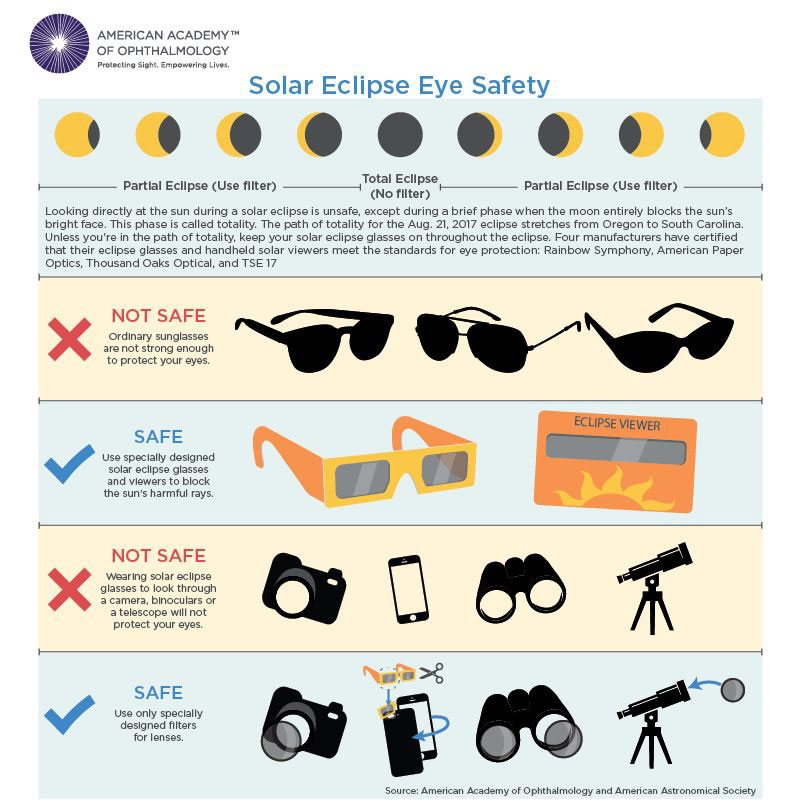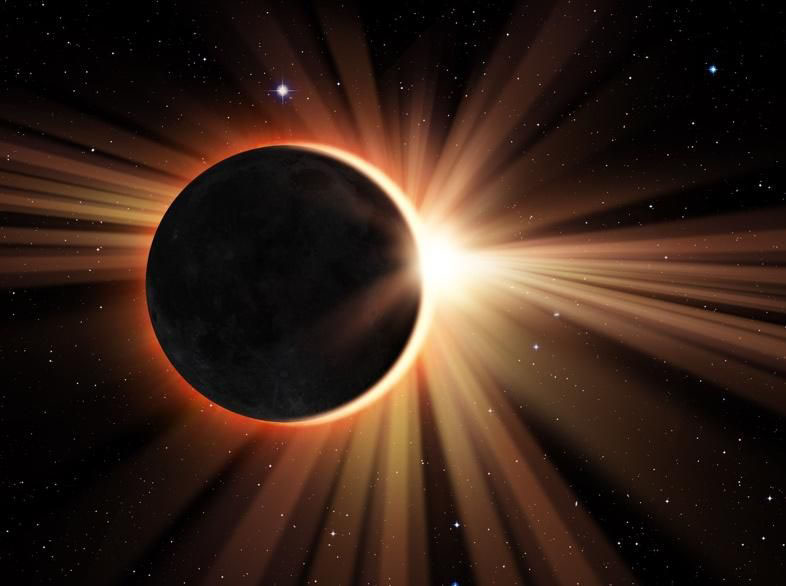On August 21, 2017, millions of people in the U.S. witnessed day turn to night during the Great American Solar Eclipse. The last time this happened from coast to coast was 1918. During a total solar eclipse, temperatures drop as the moon completely covers the sun. You can see the spectacular colors and light of the sun’s atmosphere, a sight revealed to us only during a total solar eclipse.
While you cannot completely prepare yourself for the amazing sight of a total solar eclipse, you should be prepared with proper eye protection. Viewing even the smallest sliver of a crescent sun peeking out from behind the moon is enough to cause irreversible damage to your vision. The powerful rays of the sun can burn holes in the retina, leading to an irreversible condition called solar retinopathy.
Sadly, many people who directly viewed the sun during an eclipse have lost central vision. There is no treatment for solar retinopathy and it can cause blindness.
There is one exception to this rule. There is a brief phase during a total solar eclipse when it is safe to look directly at the sun. This phase is called Totality, and it lasts about 2 minutes. It occurs when the moon entirely blocks the sun’s bright face. But as soon as the sun begins to reappear, put the solar filters back on.
The path of Totality during the Great American Solar Eclipse was about 70 miles wide and stretched from Oregon to South Carolina. It passed through Idaho, Wyoming, Nebraska, Kansas, Missouri, Illinois, Kentucky, Tennessee, Georgia, North Carolina and South Carolina. Outside the path of Totality, sky watchers witnessed a partial solar eclipse.
There are no exceptions to the rules for safely viewing a partial solar eclipse. To keep your eyes safe for eclipse viewing, remember these four tips:
• Use specially designed solar eclipse glasses and viewers to block the sun’s harmful rays. Ordinary sunglasses, even dark ones, are not strong enough to protect your eyes. To date, only 4 manufacturers have certified that their eclipse glasses and handheld solar viewers meet international safety standards:
o Rainbow Symphony
o American Paper Optics
o Thousand Oaks Optical
o TSE 17
• Inspect your solar filter before the eclipse, and don’t use it if it’s scratched or damaged.
• Another option is to view the eclipse through #14 welder’s glass. That’s much darker than the shades arc welders typically wear.
• Use solar filters on camera lenses, binoculars, and telescopes. Do not use solar eclipse glasses to look through a camera, binoculars or a telescope. The sun can melt the filter and damage your eyes.
Hope you had a safe and memorable Great American Solar Eclipse- your eyes will thank you for years to come!
Also if you happen to be an eclipse-chaser, watch out for several upcoming partial solar eclipses throughout the world over the next few years, as well as a several total solar eclipses as well. You’ll have to wait a bit though for the next one in the US- it’s on April 8, 2024. Save the date in your calendar and remember to use proper eye protection!





